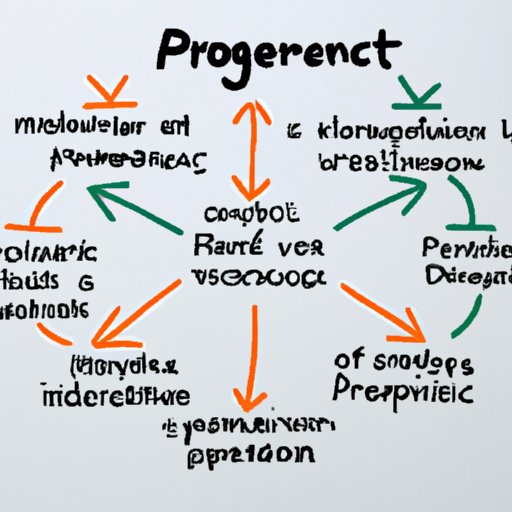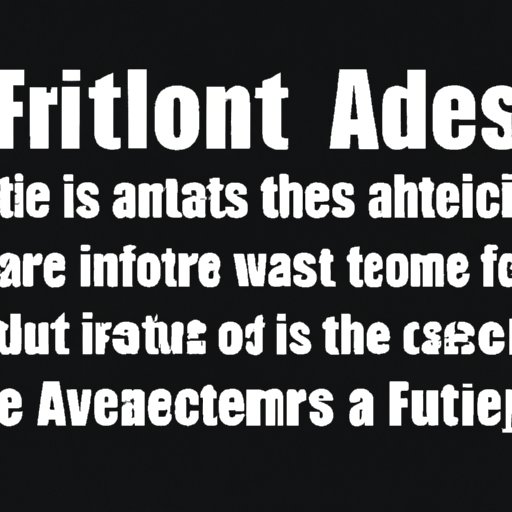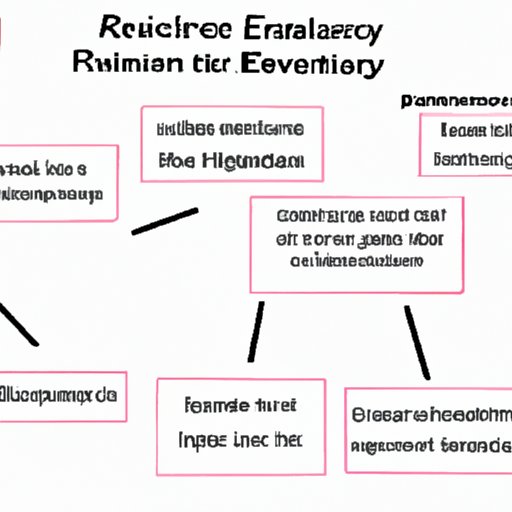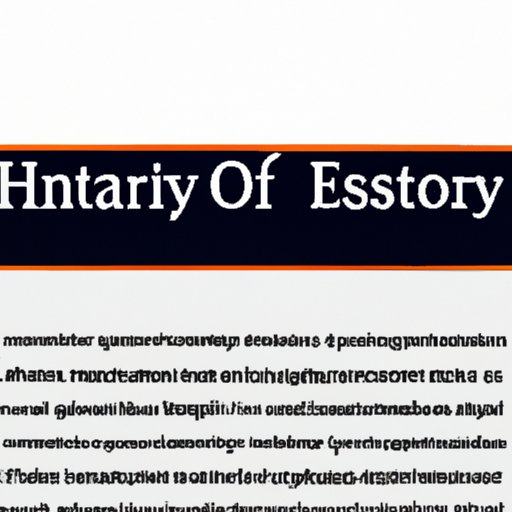Introduction
Writing a history essay can seem like a daunting task, but it doesn’t have to be. With the right approach and a few helpful tips, you’ll be able to craft an engaging introduction that will set the tone for your essay. This article will provide an overview of what a history essay is, typical problems encountered when writing one, and how to start a history essay with an interesting fact or anecdote.
Definition of a History Essay
A history essay is an academic paper that focuses on the development of a particular event or phenomenon in the past. It involves exploring different aspects of the event or phenomenon, such as its origins, causes, effects, and implications. The purpose of a history essay is to demonstrate how well the student understands the topic and how effectively they can analyze and evaluate primary source material.

Overview of Typical Problems Encountered
One of the most common problems faced by students when writing a history essay is getting started. It can be difficult to know where to begin, especially if the topic is unfamiliar. Another challenge is formulating the main argument or thesis statement. This is often the foundation of the essay and must be clear, concise, and well-developed. Finally, many students struggle to find and use relevant primary source material to support their arguments.
Begin With an Interesting Historical Fact or Anecdote
One of the best ways to engage readers and draw them into your essay is to start with an interesting historical fact or anecdote. This can be a great way to introduce the topic, set the scene, and help the reader understand why this issue is important. It can also give you a chance to showcase your knowledge of the subject and demonstrate your critical thinking skills.

Examples of Interesting Facts or Anecdotes
An example of an interesting historical fact or anecdote could be something like: “In 1789, the French Revolution began with the storming of the Bastille prison.” Or: “In 1848, the Seneca Falls Convention was held, launching the Women’s Rights Movement in the United States.” These examples are not only interesting but also provide a great starting point for your essay.
Benefits of Starting with an Interesting Fact or Anecdote
Starting with an interesting fact or anecdote can help draw the reader in and make them more interested in your essay. It can also provide context and help the reader understand the significance of the topic. Additionally, it can give you a good foundation to build upon as you move through the essay and make your main argument.
Outline the Main Argument in the Introduction
Once you’ve introduced the topic with an interesting fact or anecdote, the next step is to outline the main argument of your essay. This should be done in the introduction and should be clear and concise. It should provide a roadmap for the rest of your essay and explain why the topic is important and worth discussing.
Defining the Main Argument
Your main argument is the core of your essay and should be clearly stated in the introduction. It should be an assertion or claim that you will be trying to prove or disprove throughout the course of your essay. It should be specific and focused, and should provide an answer to the question posed by your essay topic.
Examples of Effective Outlines
An effective outline should include an introduction, body paragraphs, and a conclusion. In the introduction, you should state your main argument and provide a brief overview of the points you will be making in the body. In the body paragraphs, you should present evidence and analysis to support your argument. Finally, in the conclusion, you should summarize the key points of your essay and draw your argument to a close.
Create a Thesis Statement
After outlining your main argument, the next step is to create a thesis statement. This is a single sentence that summarizes your argument and serves as the focus of your essay. It should be clear, concise, and specific, and should be supported by evidence and analysis throughout your essay.
Defining a Thesis Statement
A thesis statement is a single sentence that summarizes your main argument. It should be clear and specific, and should provide a roadmap for the rest of your essay. Your thesis statement should be supported by evidence and analysis throughout the essay, and should be revisited in the conclusion.
Writing Tips for Crafting an Effective Thesis Statement
When crafting your thesis statement, it’s important to keep it clear and concise. You should avoid using vague language and instead be as specific as possible. Additionally, your thesis statement should be debatable and open to interpretation. Finally, it should be focused and relevant to the topic at hand.
Utilize Primary Sources
In order to write a strong history essay, it’s important to utilize primary source material. Primary sources are documents, artifacts, photographs, and other records that were created during the time period being studied. They provide firsthand accounts of events and can give you valuable insight into the topic.
Defining Primary Sources
Primary sources are documents, artifacts, photographs, and other records that were created during the time period being studied. They can include letters, diaries, newspaper articles, government documents, speeches, photographs, maps, paintings, and much more. Primary sources provide firsthand accounts of events and can give you valuable insight into the topic.
Benefits of Using Primary Sources
Using primary sources can help you gain a deeper understanding of the topic and can provide evidence and analysis to support your argument. Additionally, primary sources can help you gain a better appreciation for the people and events involved in the topic. Finally, primary sources can help you develop your own perspective on the issue and form your own conclusions.

Showcase Relevant Evidence and Analysis
In order to write a successful history essay, it’s important to showcase relevant evidence and analysis. This means finding and presenting evidence that supports your argument and then analyzing it to draw meaningful conclusions. This can include utilizing primary sources, exploring different interpretations of the evidence, and connecting the evidence to broader themes and issues.
Defining Evidence and Analysis
Evidence is any information or material used to support an argument. It can include primary sources, statistics, quotes, and other forms of data. Analysis is the process of examining evidence and drawing meaningful conclusions from it. This includes exploring different interpretations of the evidence and connecting it to broader themes and issues.

Examples of Relevant Evidence and Analysis
An example of relevant evidence and analysis could be exploring how the French Revolution impacted the development of democracy in Europe. This could involve looking at primary source documents from the time period and exploring different interpretations of them. Additionally, it could involve connecting the evidence to broader themes such as the rise of nationalism, the spread of Enlightenment ideals, and the decline of absolute monarchy.
Conclusion
Writing a successful history essay requires careful planning, research, and analysis. This guide has provided essential tips on writing a successful history essay introduction, including choosing an interesting fact or anecdote, outlining the main argument, creating a thesis statement, utilizing primary sources, and showcasing relevant evidence and analysis. By following these steps, you will be able to craft an engaging and well-researched essay that will impress your readers and help you get the grade you deserve.
(Note: Is this article not meeting your expectations? Do you have knowledge or insights to share? Unlock new opportunities and expand your reach by joining our authors team. Click Registration to join us and share your expertise with our readers.)
